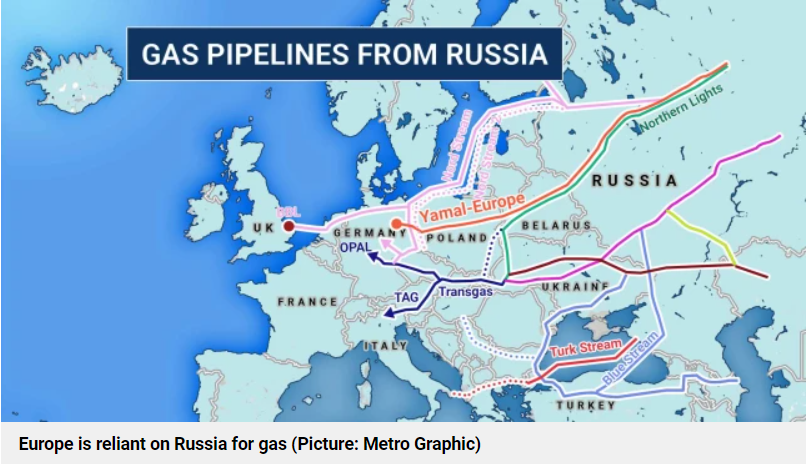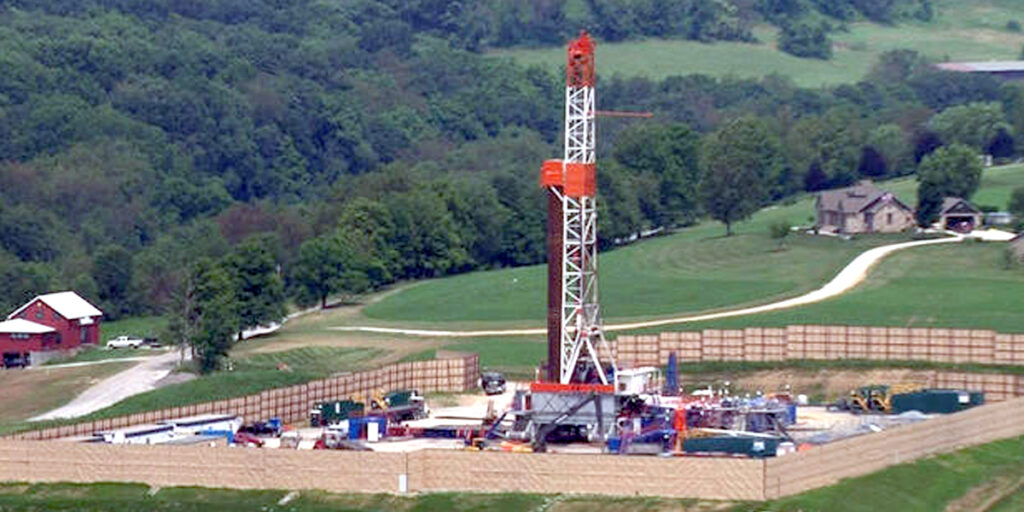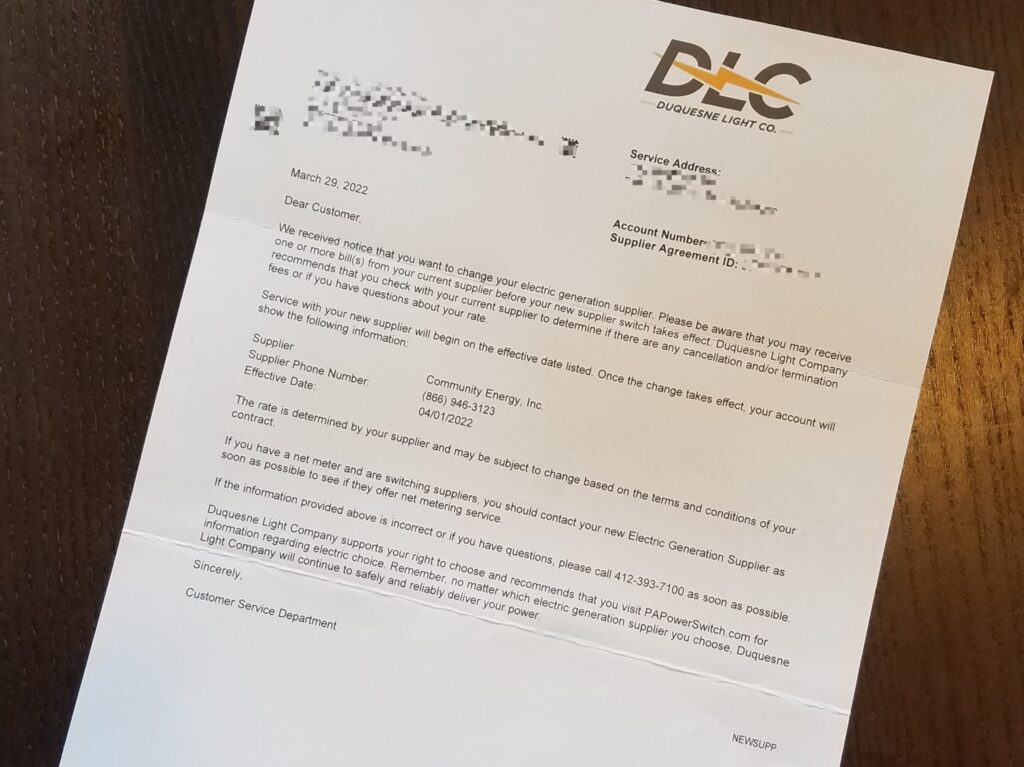Part 2 – A Just Transition
If you didn’t read last week’s post on this subject, I will direct you there first for the setup and lengthy disclaimers regarding my opinions.[1] As always, the positions stated here are my own and not representative of any organization with which I am affiliated.
~
People who know me know that I do not respond well to manipulation, and that is exactly what I saw Putin’s actions (and his expectations of the rest of the world’s reactions) to be: manipulation. I described in last week’s post what I believed to be a calculated decision that would result in panic over a resource that he had in abundance. Since then, I’ve looked a little closer at the timeline and events of the invasion.

Image credit: [2]
He started his attack on February 24, the day Ukraine had planned a test to detach its electricity grid from Russia’s.[3] He followed up with swift seizures of the Chernobyl exclusion zone the same day and the Zaporizhzhia nuclear power station on March 4. Based on the media frenzy that erupted after Russia’s takeover of Chernobyl, I assume he was banking on increasing global fears about nuclear energy. As of April 4, Zaporizhzhia is still under Russian control, with 4 of its 6 reactors disconnected from the grid and/or in states of shutdown.[4] It is the largest nuclear plant in Europe by capacity and therefore a major source of reliable baseload energy. Shutting down its reactors will increase demand for other forms of energy, such as Russian oil and gas.
If Putin decides to throw his weight around, bolstered by Europe’s reliance on Russian fossil fuels, the only reasonable response is to find alternate resources to decrease dependence on Russia, or – using the term of the moment – increase our “energy independence.”
Energy Independence
For years since I started working in energy efficiency, I’ve heard many plans for ways to achieve American energy independence. Those plans often include energy efficiency (using less in the first place) and building out a diversified grid (heavy in nuclear and renewables). A major concern with our reliance on fossil fuels is that while we do have them here, we have an effectively limited supply because we are using them faster than they can be replenished. If we liken our reliance on fossil fuels to an addiction, changing our supplier doesn’t address the problem: we will eventually come to the end of our own supply and once again be at the mercy of another supplier if we haven’t transitioned to a more sustainable source of generation.
In doing some reading for this post, I came across a plan to reduce Europe’s dependence on Russian fossil fuels, as developed by the Atlantic Council, an American think tank focused on international security and global economic prosperity.[5] The plan focused on immediate, short-term, and long-term actions to offset European use of Russian oil and gas. Recommendations included importing LNG from elsewhere in the world, delaying or canceling the closure of Germany’s remaining three nuclear reactors, and pushing for expansion of clean energy technologies as quickly as possible.[6]

Image credit: [7]
This plan asserts that clean energy transition models expect fossil fuels to play a role in global energy markets through at least 2050. I cannot speak to that, but I can speak to the fact that this think tank was obviously American, and it was the following line that gave it away: “The US should position itself as the global leader in lower-emissions hydrocarbon export.” It is a very common argument, especially so over the last month, that the US should remain an energy exporter in order to support our own energy independence, our economy, and our allies, as we offset their reliance on Russian resources. However, how we should achieve that energy independence is a major point of disagreement. There is a push to double down on our own fossil fuel production, but there is another call to invest more heavily in renewables to help break our addiction to oil and gas altogether.[8],[9] And “addiction” may be the right word, since we don’t seem to be able to get away from it.
Bridge to Nowhere
Over a decade ago, fossil gas, a.k.a. natural gas, a.k.a. shale gas was hailed as a “bridge fuel” to replace coal as a cleaner energy source and tide us over until renewable technologies were in place, but it doesn’t look as though gas extraction is slowing down any time soon (it was ramping up even before Putin’s war). One of many problems with continued dependence on gas is that while it burns cleaner than coal, the process of getting it to the combustion site is full of holes – literally and figuratively. Methane (a major component) is a far more potent greenhouse gas than CO2. Methane releases from gas infrastructure have been targeted as a major contributor to climate change,[10] and regulation loopholes allow for lax maintenance of infrastructure, leading to plentiful leaks.[11]
I like to keep my blog and my day job separate to the greatest extent possible, so I will simply, briefly mention that climate impacts are not the only consideration in this complex equation. There are numerous health impacts and risks associated with the fossil gas life cycle, as demonstrated by a mountain of health studies.[12] There is also evidence that gas extraction in Appalachia was not the economic boon it was promised to be, leaving host communities worse off than before the gas boom.[13]

Image credit: [14]
Similar to the Atlantic Council’s (and others’) calls for US leadership in energy exports, here in Pennsylvania there are also calls for our state to maintain its position as the top energy exporter in the US. And to do so, Pennsylvania is backing gas as its horse: less than one third of our electricity was generated by gas in 2016, and it was up to more than half in 2020.[15]
If fossil gas truly is supposed to be a “bridge fuel” to renewables, I want to make sure we cross that bridge as quickly as possible. So, in my own effort to reduce demand for fossil fuels and support the growth of renewable generation, I finally returned to my research from three years ago and selected a third-party electricity supplier. Since the decision would impact both of us, I raised the issue with Christian so we could make the decision “together,” but I had an entire case prepared to support my choice (basically the contents of these two blog posts). Christian, knowing how important it was to me, didn’t even need to hear my supporting evidence and told me just to pick whichever one would make me the happiest. They say that money can’t buy happiness, but it can buy PA-based wind and solar generation.
Energy Leadership
As I explained in my initial posts about how the grid works,[16] you can’t determine which electrons flowing through the power lines into your house are the result of fossil generation vs. renewable generation. Electricity is generated by multiple types of sources, and it flows into the grid, as multiple hoses might fill a swimming pool. Using the pool analogy, there’s no way to remove only the water that came out of one specific hose. Around here, in our 13-state interconnection known as “PJM,” no matter whether you buy “green” energy or not, your electricity will come from about one third nuclear, one third gas, one fifth coal, and a mix of other sources for the rest.[17]
Our state has been a leader in energy production for generations, but that title has come at a cost to our people, as extractive industries and the hazardous jobs associated with them have negatively impacted the health and wellbeing of our residents and our environment. However, we now have the option to choose electricity generated from more sustainable sources and effectively vote with our dollars. For anyone who says there is no place for market-based solutions in a clean energy economy, I will point to the fact that we (and several other people we know) are now sourcing our electricity from Community Energy, and in doing so supporting the growth of utility-scale clean energy projects across the country, but, most importantly, right here in Pennsylvania.[18]

There are cheaper options that support renewable generation elsewhere in the country, and choosing those still helps to offset fossil-based generation. Some of those options can even be comparable in price to a standard EDC rate, depending on a variety of factors that represent a conversation for another time. But the added premium we’re paying for our kilowatt-hours (several cents above other green plans and our original rate at Duquesne Light) ensures that wind and solar projects in Pennsylvania get the credit – and the money – for supplying our electricity. The more people there are who choose to support renewables, the more renewables will come online, and the faster we will cross this bridge together.
~
I hope this two-part series was informative. I try to avoid using this blog as a soapbox, but this topic is very important to me for multiple reasons. If you have a different perspective, I invite you to share it (respectfully) below.
Thank you for reading.
[1] https://radicalmoderate.online/renewable-energy-and-energy-independence-part-1/
[3] https://www.wired.com/story/the-race-to-rescue-ukraines-power-grid-from-russia/
[4] https://www.oecd-nea.org/jcms/pl_66130/current-status-of-nuclear-power-installations-in-ukraine
[5] https://www.atlanticcouncil.org/
[7] https://www.tumbip.com/tag/HARKONNEN
[11] https://earthworks.org/blog/closethepaloophole/
[12] https://www.psr.org/blog/resource/fracking-compendium/
[14] https://www.ecowatch.com/natural-gas-bridge-fuel-1983761881.html
[16] https://radicalmoderate.online/third-party-electricity-suppliers-part-1/
[17] https://gats.pjm-eis.com/GATS2/PublicReports/PJMSystemMix/Filter
[18] https://www.communityenergyinc.com/
0 Comments